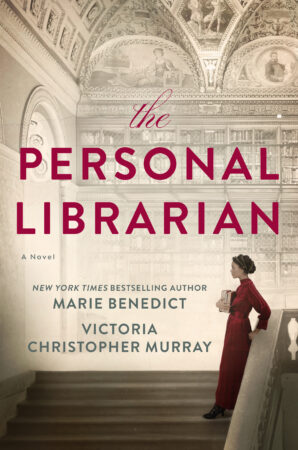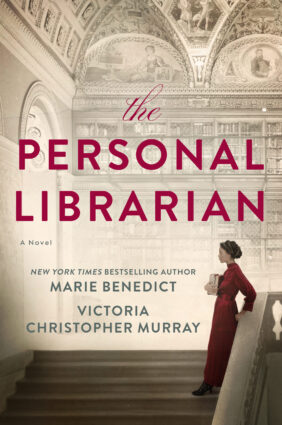
In her twenties, Belle da Costa Greene is hired by J. P. Morgan to curate a collection of rare manuscripts, books, and artwork for his newly built Pierpont Morgan Library. Belle becomes a fixture on the New York society scene and one of the most powerful people in the art and book world, known for her impeccable taste and shrewd negotiating for critical works as she helps build a world-class collection.
But Belle has a secret, one she must protect at all costs. She was born not Belle da Costa Greene but Belle Marion Greener. She is the daughter of Richard Greener, the first Black graduate of Harvard and a well-known advocate for equality. Belle’s complexion isn’t dark because of her alleged Portuguese heritage that lets her pass as white—her complexion is dark because she is African American.
The Personal Librarian tells the story of an extraordinary woman, famous for her intellect, style, and wit, and shares the lengths to which she must go—for the protection of her family and her legacy—to preserve her carefully crafted white identity in the racist world in which she lives
I’d been looking forward to reading this novel for months. Although I received an advance reader copy some time ago, I’d been waiting for the audiobook as I enjoy alternating between the two. This is my third Marie Benedict book and thus far my favorite. Partially because of the subject, but also because her partnership with Victoria Christopher Murray lent a depth to the writing I haven’t seen in her solo work.
The Personal Librarian is fascinating. I love historical fiction because I am transported to an unfamiliar place and time, and I always learn something (I’m great fun at a cocktail party). The authors clearly did extensive research to present the story, but also to delve into the world of rare books and art.
The book is a wonderful retrospective of many famous people, sung and unsung, and I especially enjoyed learning about the main character, Belle da Costa Greene, who possessed qualities I so admire in women operating in a man’s world. She had pluck, courage, intelligence, flair, cunning, and guttural instincts, and she found success despite having to hide her identity—she fooled her employer, competitors, business associates, even intimate partners for decades. That level of secrecy must have been terribly stressful. Not only did she sacrifice her ethnicity for career success, her fear of discovery also affected her romantic life. She couldn’t be herself with anyone other than her family. (I do wish, however, that her “passing” wasn’t mentioned so many times. It was redundant, and readers clearly understood the premise.)
The book was also an interesting character study of financier J.P. Morgan, a man who was bigoted and ruthless, yet trusted Belle implicitly to negotiate in his stead. A woman with that level of influence in the early 1900s was unheard of!
As an aside, I’m one of those book nerds who enjoys reading the author’s note as much as the narrative. Here there were two, so it was double the fun. I thought they were over the top, though; too long, and too focused on racial issues instead of the broader context of the novel. There was more to Belle da Costa Greene than the color of her skin.
The Personal Librarian is an absorbing read by talented storytellers, and it lives up to the hype. Oh, and the audiobook’s narrator is excellent. Fans of The Vanishing Half, Josephine Baker’s Last Dance, and The Swans of Fifth Avenue will enjoy it. 4.5 stars.
